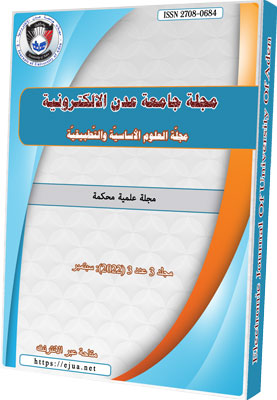دراسة الخصائص التركيبية والبصرية و الكهروضوئية للخلايا الشمسية المصنعة من n-TiO\(_2\)/p-CuO و n-TiO\(_2\)/p-Cu\(_2\)O عن طريق تغيير أقطاب التوصيل الخلفية
DOI:
https://doi.org/10.47372/ejua-ba.2022.3.178الكلمات المفتاحية:
الأغشية الرقيقة، الخواص الضوئية، الخلايا الشمسية n-TiO\(_2\)/p-CuO و n-TiO\(_2\)/p-Cu\(_2\)الملخص
تهدف الدراسة إلى مقارنة الخصائص التركيبية والبصرية والخلايا الكهروضوئية لخليتين شمسيتين مصنوعتين من n-TiO2/p-CuO و Cu2O-n-TiO2/p. وتناولت تأثير المعادن المختلفة كأقطاب كهربائية للتوصيل الخلفي على الخصائص الكهروضوئية للخلايا الشمسية المصنعة، وذلك لفهم الدور الذي تلعبه في تنظيم خواص الخلايا الشمسية. كان القطب التوصيل الأمامي في كلا الخليتين عبارة عن طبقة زجاجية مطلية بـ TIO، في حين أن أقطاب الاتصال الخلفية كانت (Mo, Al, Cu, Ag, Co, Au, Ni, and Pt).
أظهرت القياسات الضوئية للأغشية الرقيقة TiO2 (سُمك 120 نانومتر)، CuO (سُمك 200 نانومتر)، و CuO2 (سُمك 200 نانومتر)، إن الانتقالات الاليكترونية المسئولة عن عملية الامتصاص هي من النوع المباشر، كما إن قيم طاقة الفجوة الضوئية بناءً على معادلة Tauc تكون 3.24 و 1.77 و 2.18 إلكترون- فولت، على التوالي. كما بينت الخصائص البصرية والهيكلية جودة الخلية الشمسية المصنعة من n-TiO2/p-CuO مقارنة بتلك المُصنَّعة منn-TiO2/p-Cu2O، لذلك متابعة الدراسات البحثية لتوضيح المزيد من مزاياها سيؤثر بشكل إيجابي على مستقبل التطبيقات الكهروضوئية. أثبتت الدراسة الحالية الدور المحوري الذي تلعبه أقطاب التوصيل المعدنية المختلفة في التحكم في خصائص الخلايا الشمسية.










